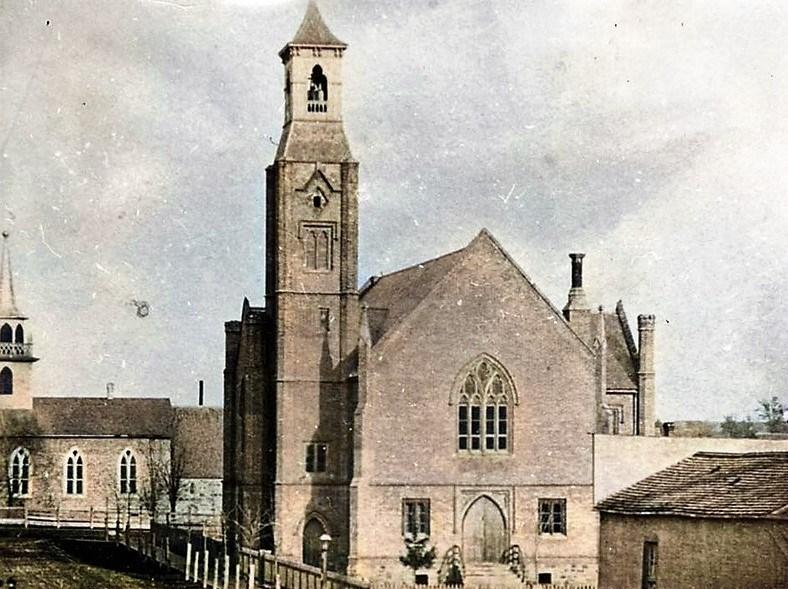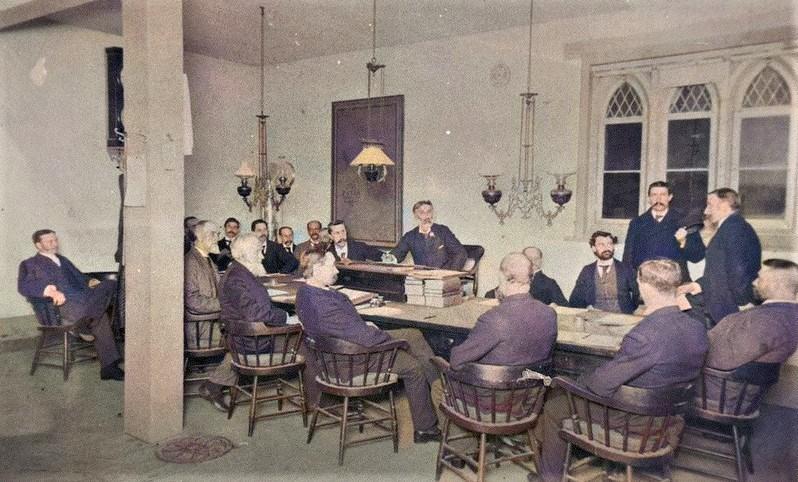
3 minute read
The Old Town Hall since 1854
A Committee was formed on February 7, 1853, to find a site for a Town Hall.
A town hall was to be built in the Upper Town of Paris where many of the area’s English and Scottish residents had homes and businesses Lot 7 and half of Lot 6 on Church St. were chosen by the committee. Architect John Maxwell and contractors Gardner and Strickland were hired. Scottish-born John Maxwell broke with tradition and designed this Civic Hall in the Gothic tradition, an architectural style that until then had been primarily used for churches Following the lead of the British Parliament buildings, which were rebuilt in the Gothic style following a fire in 1834, Maxwell introduced Civic-Gothic architecture to Canada. The building cost was $12,000 Plans were made to build a Town Hall and Market House. On the lower level would be a “Lockup” for lawbreakers, and on the secondfloor was an Assembly Hall, which was later referred to as the Opera House Space for council meetings, and a Magistrate’s office, were included on the main floor. The Paris Town Hall was to have a bell tower and bell Previously a sundial had been installed at the front of the cobblestone church next door St. James Anglican. People would set their timepieces there, and the bell in the church was rung three times a day morning, noon, and evening to indicate the time When the Town Hall was completed in 1854, the town was to have its own bell to indicate the time, to warn of fire, and to announce a death. Paris’ first grammar school for young boys was held in a room in the new Town Hall up until 1856 when council took over the space and held the first meeting of town council on January 21st . In 1857 a tank filled with water was built beside the building in order to supply the fire brigades with water. In 1858 the directors of the
Advertisement
Mechanics’ Institute held a successful “Soiree” in the Opera House to raise money for the new reading-room and Library. In 1874 the town purchased a 1,233-pound bell for $500 from Meneely Bell Foundry and hired John Knarston as the bell-ringer for $100 per year The bell rang three times a day at 6:00 am, noon, and 6:00 pm.
In 1900 council moved its offices and meeting chambers to the lower town in order to have a more central location. After the great fire of 1900, many retail businesses moved to lower town creating a more commercial core where it had previously been mostly industrial mills and other industry
Continued on page 9
In 1901 the town’s first motion picture (a Jerky Recording of Queen Victoria’s Funeral) was shown in the Assembly Hall “Opera House”. Many movies and live performances were presented at the Opera House throughout the early 1900s. James McKay’s report on the safety of the Town Hall stated in 1908 that the bell tower needed repair. In September that year “The Village Carnival” was held on September 3, 4, and 5 at the Town Hall and $250 was donated to the Sick Kids Foundation. On February 18th & 19th , 1914 the Opera House presented “Thomas A. Edison Kintephone Company Incorporated Taking Pictures”. In 1915 a meeting was held to consider the application of the G.W. McFarlane Engineering Co. for converting the basement of the town hall for the manufacture of artillery shells It was later approved, and 35-60 men were employed manufacturing artillery shells to be shipped to France. In 1917 Charles and Chester Wheeler moved the Wheeler Needle Works Factory to the former Town Hall. The company was a specialty needle manufacturer serving the textile industry started by Chester Wheeler’s father. Chester was involved with the Paris Lion’s Club and responsible for the renovation of several downtown properties By 1953 the tower of the former Paris Town Hall had deteriorated so much that the bell had to be removed. In 1954 the building was purchased by Mary Maxim. An addition was added, and the top floor was used for Mary Maxim offices, while the ground floor served as a show room. In 1976 Mary Maxim purchased the former Zamboni factory on Scott Ave. and used the 7,000 square feet for warehouse space Mary Maxim built a new building at their Scott Ave location and in 1984 left the Old Town Hall, and it became an auction house. In 2016, the Corporation of the County of Brant purchased the building, financial support came from “Degrassi” creator Linda Schuyler when she donated 1 million dollars. The building was renamed the Bawcutt Centre in honour of Schuyler's parents, Jack and Joyce Bawcutt Jack was the Town of Paris’ last Mayor and had worked as sales manager for Mary Maxim. The Corporation of the County of Brant plans to restore the building, so that it might be used as a community centre with space for theatre and performance arts. It was decided that the new County of Brant main Library branch could be located on the site and combined with the restored Bawcutt Centre in 2022
This photograph depicts an 1879 meeting of the Paris town council, which at the time met at the Church street town hall. Among the figures depicted are mayor A.H. Baird and the police constable, to the right holding hat.

This image was printed on the tenth page of photographs in At the Forks of the Grand: Volume II by D. A. Smith.










